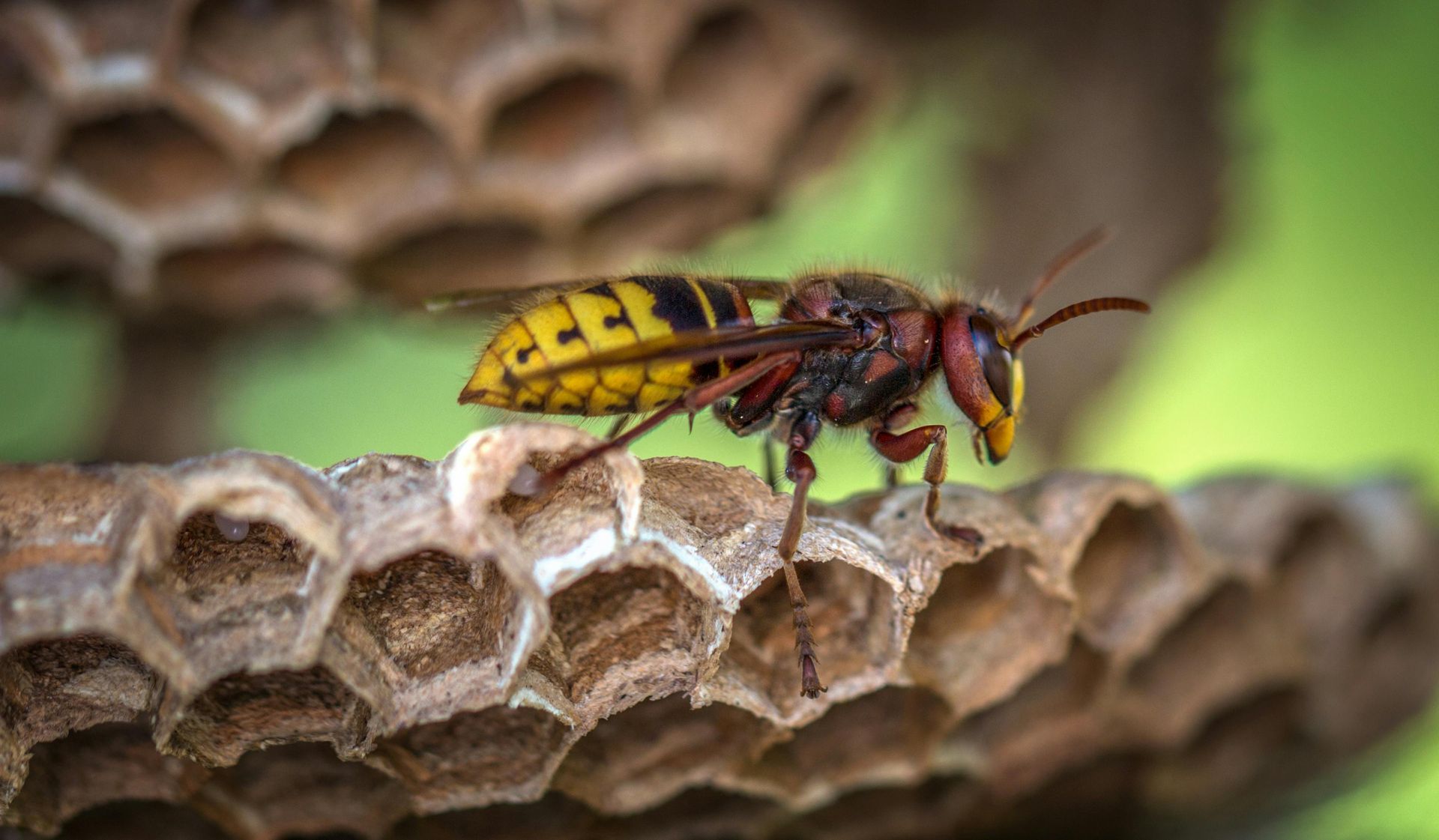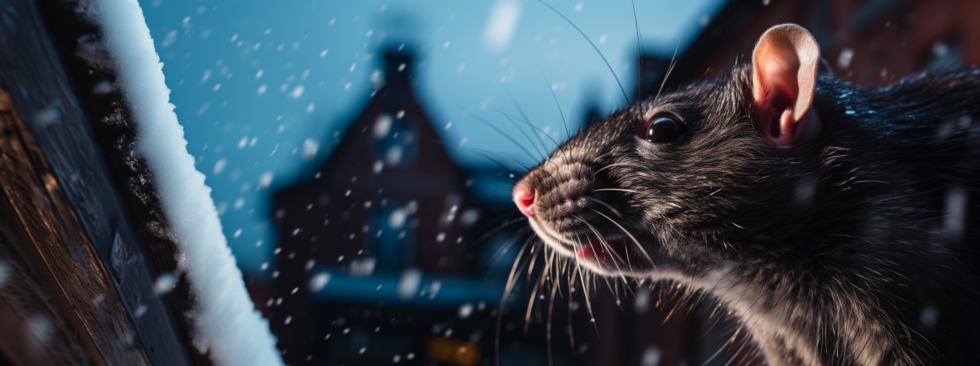Honeybees, Wasps, and Yellow Jackets…Know the Difference
Pest Control, Wildlife Exclusion Services, Residential/Commercial Construction, Mold Restoration and Fire & Water Damage Repair
As residents of Rotterdam, NY, and the surrounding Capital Region, we’re no strangers to the buzz of stinging insects during the warmer months. Whether you’re enjoying a backyard barbecue or tending to your garden, encountering a winged pest can quickly turn a pleasant day into a stressful one.

But not all buzzing insects are the same, and understanding the differences between honeybees, wasps, and yellow jackets is crucial for both your safety and effective pest management. In this comprehensive guide, we’ll dive into the characteristics, behaviors, and ecological roles of these insects, helping you identify them and know when to call in the professionals at Accurate Pest Control for safe and effective solutions.
Why It Matters to Know the Difference
At first glance, honeybees, wasps, and yellow jackets may seem similar—they all fly, they can sting, and they’re often unwelcome guests at outdoor gatherings. However, their behaviors, nesting habits, and ecological importance vary significantly. Misidentifying these insects can lead to inappropriate responses, such as attempting to remove a honeybee colony (which may be protected due to their critical role in pollination) or underestimating the aggression of a yellow jacket nest. By learning to distinguish them, you can make informed decisions about how to handle an infestation and protect your property while respecting beneficial species.
Meet the Insects: Honeybees, Wasps, and Yellow Jackets
Let’s break down the key characteristics of each insect to help you identify them with confidence.
1. Honeybees (Apis mellifera)
Appearance
- Color: Golden-brown with black stripes.
- Size: About ½ inch long.
- Body: Fuzzy, with a slightly rounded abdomen.
- Wings: Transparent with a slight amber tint.
Honeybees are often mistaken for other stinging insects, but their fuzzy appearance is a key giveaway. Their hairy bodies are designed to collect pollen, making them essential pollinators.
Behavior
- Temperament: Generally docile unless their hive is threatened.
- Stinging: Honeybees can only sting once, as their barbed stinger lodges in the skin, causing the bee to die.
- Diet: Nectar and pollen from flowers.
- Activity: Most active during the day, especially in warm weather.
Nesting Habits
- Location: Honeybees build wax combs in hives, often in tree hollows, attics, or wall voids.
- Colony Size: A single hive can house tens of thousands of bees.
- Seasonality: Active year-round, but they cluster in the hive during winter to stay warm.
Ecological Importance
Honeybees are vital to agriculture and ecosystems, pollinating crops like apples, berries, and vegetables. In New York, they contribute to the state’s robust agricultural industry. Due to their ecological value, beekeepers often relocate honeybee colonies rather than destroy them.
2. Wasps (Vespula spp. and others)
Appearance
- Color: Black and yellow or black and red, depending on the species.
- Size: ½ to 1 inch long.
- Body: Smooth and shiny with a slender, pinched waist.
- Wings: Clear or smoky, folded along the body when at rest.
Wasps have a sleek, almost menacing look compared to the fuzzy honeybee. Their narrow waist is a defining feature.
Behavior
- Temperament: Aggressive, especially when food or their nest is involved.
- Stinging: Can sting multiple times, as their stinger is smooth and retractable.
- Diet: Omnivorous, feeding on nectar, other insects, and human food (e.g., sugary drinks, meat).
- Activity: Active during the day, with peak activity in late summer and early fall.
Nesting Habits
- Location: Wasps build paper-like nests from chewed wood fibers, often in eaves, shrubs, or underground.
- Colony Size: Smaller than honeybee colonies, typically hundreds to a few thousand.
- Seasonality: Colonies die off in winter, with only the queen surviving to start a new nest in spring.
Ecological Role
Wasps are natural predators, controlling populations of other pests like flies and caterpillars. However, their aggressive nature and attraction to human food make them a common nuisance.
3. Yellow Jackets (Vespula vulgaris and Vespula germanica)
Appearance
- Color: Bright yellow and black stripes.
- Size: About ½ inch long.
- Body: Smooth, with a compact, robust build and a narrow waist.
- Wings: Clear, similar to wasps.
Yellow jackets are often confused with honeybees due to their coloration, but their smooth, shiny bodies and lack of fuzz set them apart.
Behavior
- Temperament: Highly aggressive, especially in late summer when food is scarce.
- Stinging: Can sting repeatedly and may attack unprovoked.
- Diet: Scavengers, feeding on sugary substances, meat, and garbage.
- Activity: Most active in late summer and fall, often crashing picnics and outdoor events.
Nesting Habits
- Location: Nests are often underground, in wall voids, or in sheltered areas like sheds.
- Colony Size: Can grow to several thousand individuals.
- Seasonality: Like wasps, colonies die off in winter, with queens overwintering.
Ecological Role
Yellow jackets help control pest populations but are less beneficial than wasps due to their scavenging habits. Their aggressive behavior makes them a significant concern for homeowners.
How to Identify Them in Rotterdam, NY
In Rotterdam’s suburban neighborhoods and rural outskirts, you’re likely to encounter all three insects, especially from spring through fall. Here’s a quick guide to spotting them:
- Honeybees: Look for fuzzy, golden-brown insects near flowers or entering a hive in a tree or building. They’re calm unless disturbed.
- Wasps: Notice sleek, shiny insects with a pinched waist hovering around food or building paper nests under eaves.
- Yellow Jackets: Spot bright yellow and black insects aggressively buzzing around garbage cans, picnic tables, or underground nests.
Still unsure? Take a photo from a safe distance and consult a professional at Accurate Pest Control for expert identification.
Dangers and Risks
While honeybees, wasps, and yellow jackets all have ecological roles, they can pose risks, especially for those with allergies or when nests are near human activity.
Health Risks
- Stings: All three can sting, but wasps and yellow jackets are more likely to do so repeatedly. Stings cause pain, swelling, and, in rare cases, severe allergic reactions (anaphylaxis).
- Allergies: About 5% of people are allergic to bee or wasp stings, which can be life-threatening without prompt medical attention.
Property Risks
- Honeybees: Large hives in walls or attics can cause structural damage from honey and wax buildup.
- Wasps and Yellow Jackets: Nests in or near homes increase the risk of stings and can damage siding or insulation if left untreated.
Behavioral Risks
- Yellow Jackets: Their scavenging habits draw them to outdoor events, increasing sting incidents.
- Wasps: Aggressive defense of nests can lead to attacks if disturbed.
- Honeybees: While less aggressive, swarming during hive relocation can be intimidating.
What to Do If You Find a Nest
Discovering a nest on your property can be alarming, but your response should depend on the insect and situation. Here’s a step-by-step guide:
- Stay Calm and Keep Your Distance: Avoid provoking the insects, especially wasps and yellow jackets, which can become aggressive.
- Identify the Insect: Use the characteristics above to determine whether it’s a honeybee, wasp, or yellow jacket nest.
- Assess the Risk: Is the nest in a high-traffic area (e.g., near a door or playground)? Is anyone in your household allergic to stings?
- Avoid DIY Removal: Attempting to remove a nest yourself can be dangerous and may worsen the problem. Sprays and traps can agitate the insects, leading to attacks.
- Call a Professional: For safe and effective removal, contact Accurate Pest Control in Rotterdam, NY. Their trained technicians can handle honeybee relocation and wasp/yellow jacket extermination with minimal risk.
Prevention Tips for Rotterdam Homeowners
Preventing stinging insect infestations is easier than dealing with an established nest. Try these tips to keep your property less attractive to honeybees, wasps, and yellow jackets:
- Seal Entry Points: Inspect your home for cracks, gaps, and holes in siding, eaves, and foundations. Seal them to prevent nesting.
- Manage Food and Garbage: Keep outdoor trash cans tightly sealed and clean up food spills promptly. Avoid leaving sugary drinks or meat exposed during outdoor events.
- Remove Attractants: Clear fallen fruit from trees and keep compost bins secure to deter yellow jackets.
- Maintain Your Yard: Trim shrubs and remove debris where wasps and yellow jackets might nest.
- Work with Beekeepers: If you suspect a honeybee swarm, contact a local beekeeper through Accurate Pest Control for humane relocation.
Why Choose Accurate Pest Control?
When it comes to stinging insect control in Rotterdam, NY, Accurate Pest Control is the trusted choice for homeowners and businesses alike. Here’s why:
- Expert Identification: Their technicians are trained to distinguish between honeybees, wasps, and yellow jackets, ensuring the right approach for each situation.
- Safe and Humane Solutions: For honeybees, they collaborate with local beekeepers to relocate hives safely. For wasps and yellow jackets, they use targeted treatments to eliminate nests without harming the environment.
- Local Knowledge: As a Rotterdam-based company, they understand the unique pest challenges of the Capital Region, from urban backyards to rural properties.
- Fast Response: Stinging insect infestations require prompt action. Accurate Pest Control offers quick, reliable service to protect your family and property.
- Comprehensive Services: Beyond stinging insects, they provide solutions for ants, rodents, bed bugs, and more, making them your one-stop pest control provider.
Whether you’re dealing with a honeybee hive in your attic, a wasp nest under your deck, or yellow jackets buzzing around your garbage cans, Accurate Pest Control has the expertise and tools to resolve the issue safely and effectively.
Conclusion
Honeybees, wasps, and yellow jackets may share the skies of Rotterdam, NY, but their differences matter. By understanding their appearance, behavior, and nesting habits, you can make informed decisions about how to handle them on your property. While honeybees deserve protection for their pollination role, wasps and yellow jackets often require professional intervention due to their aggressive nature. For all your stinging insect needs, trust Accurate Pest Control to deliver safe, effective, and environmentally responsible solutions.
Don’t let buzzing pests ruin your summer. Contact Accurate Pest Control today at 518-374-0357 or visit accuratepestcontrolny.com to schedule an inspection and take back your outdoor space!





